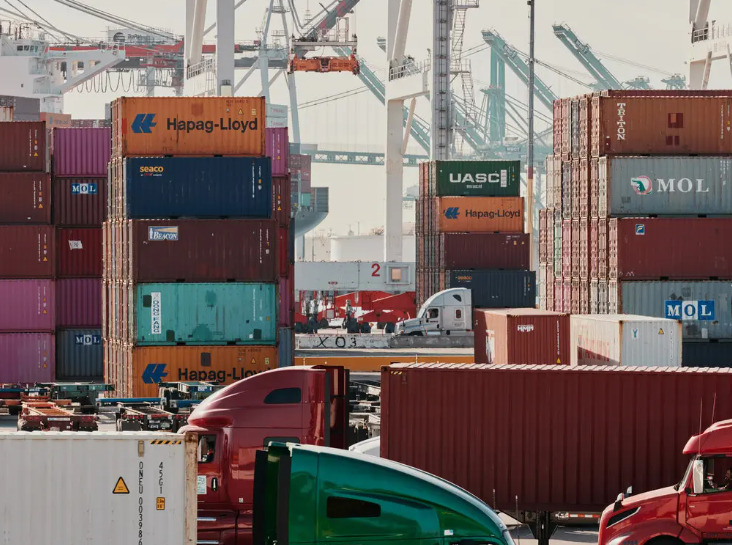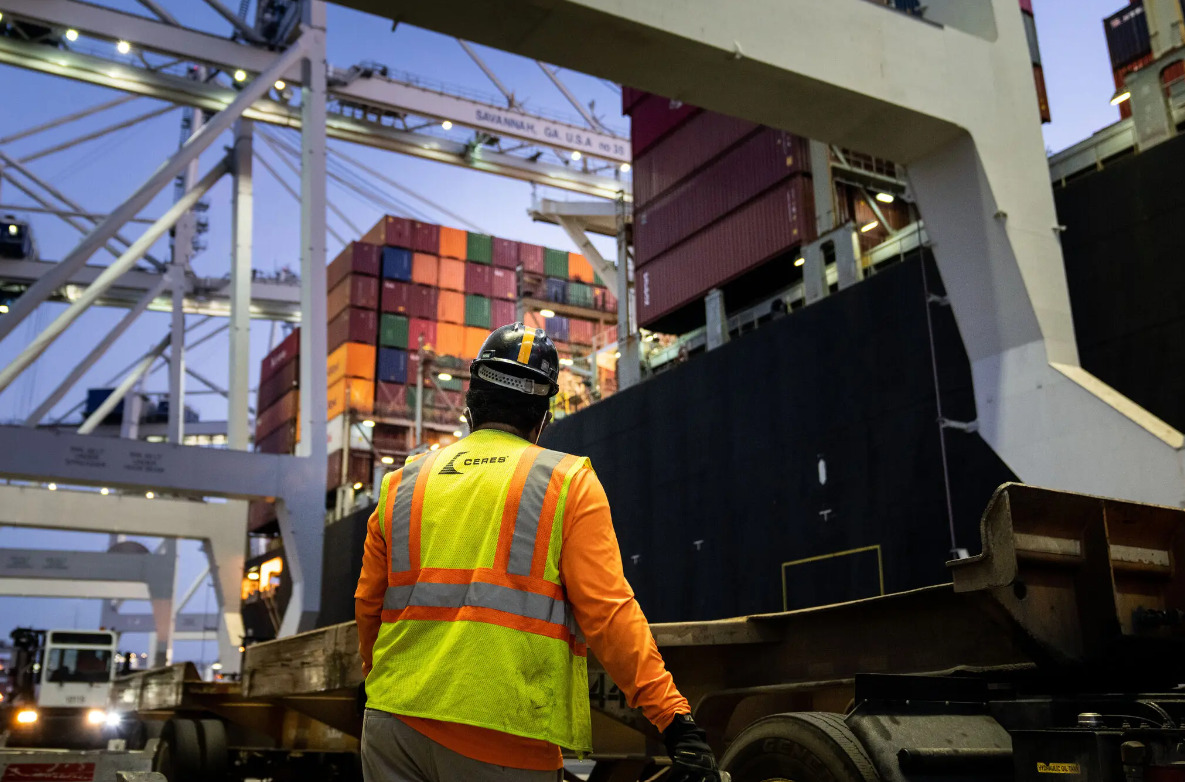
Paul Nicklen: A Reverence for Nature
Standing in front of any of Canadian photographer Paul Nicklen’s large-scale images in the current exhibition at Hilton Contemporary, one cannot help but be totally…
Thought Leader: Paul Nicklen
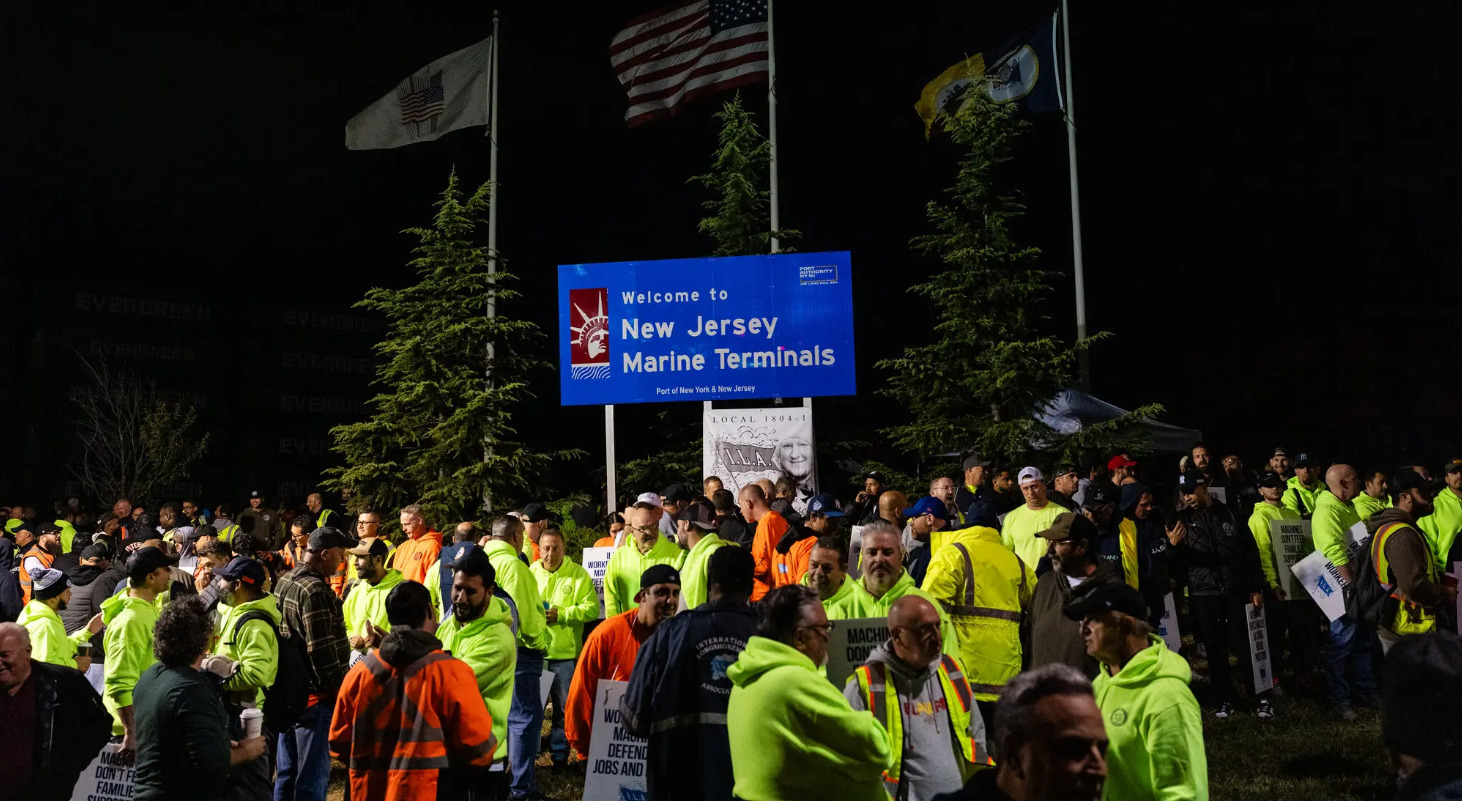
This piece is by WWSG exclusive thought leader, Peter Goodman.
Every workday, on his early-morning drive to his job overseeing a warehouse in northern New Jersey, Sean Murphy takes in the frenetic scene of the busiest port on the East Coast.
Towering cranes lift shipping containers off vessels newly arrived at Newark from points around the globe. Mile-long freight trains pull cargo to and from the docks. Belching trucks clatter down the highway, hauling containers to distribution centers from Maine to Florida.
Not on Tuesday. As 45,000 dockworkers began a strike, shutting most of Newark and three dozen other shipping terminals along the Gulf and East Coasts, Mr. Murphy was confronted with the spectacle of a busy industrial hub now largely devoid of activity.
Here was a visual encapsulation of the challenge confronting the global economy: cargo marooned, commerce frozen and no clarity on when normalcy will return.
“It was eerie, like a ghost town,” Mr. Murphy said. “It was really creepy, if I can be honest with you. It was dead silent. I’ve never seen that in my entire life.”
Beyond the atmospherics, the effective shutdown of Newark and other major ports threatens the livelihoods of millions of people who work near the affected docks — and businesses that depend on the flow of exports and imports.
Mr. Murphy’s employer, Flexport, manages shipping and trucking for major brands in industries like clothing, electronics, furniture and construction materials. Normally, this means receiving containers freshly plucked off ships, sorting the contents across the shiny concrete floor and then sending goods by truck to warehouses and stores.
But the strike has halted the influx of containers at the northern New Jersey port complex, so Mr. Murphy found himself wondering how much more freight was on its way.
The previous week, his warehouse received three times its usual volume of freight, as customers raced to complete shipments before the strike. On Tuesday, trucks continued to deliver cargo that had arrived at the port the day before, when the longshore crews were still working.
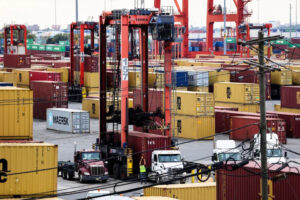
“Right now, we’re still not seeing the impacts of the strike,” Mr. Murphy said. But he had no idea how long that would last.
A truck stop around the corner, normally bustling with vehicles lined up for fuel, was strikingly quiet. Most of the regular customers are truck drivers who move containers between the docks and nearby warehouses.
“It’s dead,” said Isthian Thomas, who was working the register, estimating that business was down 80 percent. The shipping terminals were closed, so no vessels were pulling up to unload, he said. No ships spelled no containers, which meant scarce work for truck drivers.
Mr. Thomas and a fellow cashier, James Lore, generally supported the aims of the dockworkers. Their jobs are exhausting and dangerous, and the shipping carriers have tallied hundreds of billions of dollars in profits. The workers deserve their piece of the action, the two men said.
They exuded a sense of blue-collar solidarity with the dockworkers, especially after the pandemic, when they all labored together despite the threat of Covid.
“We were suddenly ‘essential workers,’” Mr. Lore said. “Before that, we were just dumb gas jockeys.”
He expressed particular sympathy toward the union’s opposition to further automation at the ports — not only because it threatens paychecks, he said, but also because it limits broader economic activity.
“The robots are not paying taxes,” Mr. Lore said.
But the few truck drivers who were on hand tended to be critical of the dockworkers, accusing them of jeopardizing paychecks for many in pursuit of raises reaching more than 60 percent over the next six years.
“It’s not realistic in this economy,” said Joseph Green, a truck driver who was headed to Massachusetts, pulling a container he had retrieved from the port on Monday. After that, he expected to be without work. “I’ll come back empty and wait until those guys finish negotiations,” he said.
As is typical at ports around the country, truck drivers in Newark express resentment toward longshore workers, describing them as veritable aristocrats of the docks. Dockworkers deny access to bathrooms, the drivers complain, even as they are forced to sit in their cabs, sometimes for hours, waiting to pick up containers.
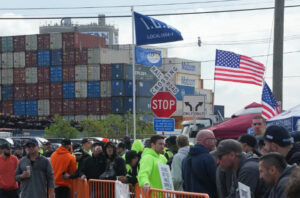
Not lost on the drivers is the reality that they are compensated only per load — meaning the time they sit waiting is effectively unpaid — while the dockworkers earn hourly wages, limiting their incentive to move faster.
“They have that flippant attitude,” Mr. Green complained. “They don’t care.”
The traditional tension between truck drivers and dockworkers highlights an odd dynamic to the strike.
The dockworkers’ union, the International Longshoremen’s Association, has sought to rally public support, and to persuade the Biden administration to maintain its position against intervening to shut down the strike, by depicting its movement as a reach for justice.
“CORPORATE GREED VERSUS WORKER RIGHTS,” declared signs wielded by picketing dockworkers outside the marine terminals of Newark. “NO WORK WITHOUT A FAIR CONTRACT.”
But the people feeling the most direct heat are other blue-collar workers who are paid much less than the dockworkers, whose wages — after accounting for overtime — often reach $200,000 a year. Truck drivers are rarely unionized, and frequently operate as independent contractors, with minimal job security.
The dockworkers seek to use the strike to make life uncomfortable for the operators of the ports — foreign-owned international shipping carriers. But the carriers may be uniquely positioned to actually benefit from the strike: They have cut service to some East and Gulf Coast destinations, which has reduced capacity, sending shipping prices higher worldwide.
This, shipping experts say, is a template that the shipping carriers have mastered in recent times — first during the supply chain disruptions of the pandemic, and more recently as Houthi rebels have trained missiles on vessels in the Red Sea, turning the Suez Canal into a virtual no-go zone.
“Recent supply chain disturbances, such as Covid and the Red Sea attacks, reduced ocean freight capacity, and prices rose dramatically in the short run,” said Daniel B. Maffei, the chairman of the Federal Maritime Commission, which regulates ocean cargo. “An I.L.A. work stoppage would be no exception. The big ocean freight companies may for a time actually bring in more revenue than they forgo.”
Mr. Maffei said he worried that the strike could endure longer than many expected, because neither side had a strong incentive to compromise. The union believes that it enjoys powerful leverage to extract better pay, he said, while employers can use the strike as an opportunity to raise prices.
Late Tuesday, the Biden administration took aim at one way the shipping carriers stand to increase revenue: through surcharges many have been affixing on shipments to ports disrupted by the strike.
“Our administration is calling on ocean carriers to withdraw their surcharges,” Transportation Secretary Pete Buttigieg said in a written statement. “No one should exploit a disruption for profit, especially at a time when whole regions of the country are recovering from Hurricane Helene.”
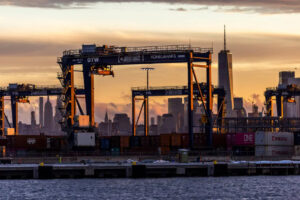
Most industry experts assume that economic disruptions will be minimal if the strike is resolved within a few days. Business that rely on the shipping industry have anticipated the strike for months and have diverted cargo to West Coast ports, while stashing extra products in warehouses.
“Our customers generally have two months’ worth of extra inventory in stock,” said Ryan Petersen, Flexport’s chief executive.
But if the strike lasts more than a week or two, backup plans are likely to be exhausted. West Coast ports could become congested, as they did during the pandemic.
Some cargo may be diverted to ports in Mexico and Canada. But dockworkers are on a three-day strike in Montreal, and Mexico’s ports tend to be smaller operations. Rail and trucking links spanning borders could be quickly strained by a surge of extra cargo.
“There aren’t many good alternatives,” said Judah Levine, head of research at Freightos, an online platform used to book containers.
All of which explained why Mr. Murphy was struggling to imagine what lay ahead at the Flexport warehouse near the port of Newark.
Industrial windows shipped in from India filled out one end of the cavernous space. Boxes of electronics from a factory in Taiwan occupied the opposite end, near cartons of clothing made in Brazil, toys from China and men’s grooming products from Britain.
Mr. Murphy was waiting for trucks that would bring in four more containers on Tuesday afternoon.
And after that?
“We just don’t know,” Mr. Murphy said. “We’re in uncharted waters.”
Paul Nicklen: A Reverence for Nature
Standing in front of any of Canadian photographer Paul Nicklen’s large-scale images in the current exhibition at Hilton Contemporary, one cannot help but be totally…
Thought Leader: Paul Nicklen
Peter Goodman: Exploding Pagers Deliver a Supply Chain Warning
This piece is by WWSG exclusive thought leader, Peter Goodman. The lethal detonation of hand-held pagers and walkie-talkies used by Hezbollah militants this week in…
Thought Leader: Peter Goodman
Peter Goodman: Beneath the Potential Strike at U.S. Ports – Tensions Over Innovation
This piece is by WWSG exclusive thought leader, Peter Goodman. Throughout the centuries, as ships have navigated oceans bearing all manner of freight, the companies…
Thought Leader: Peter Goodman
